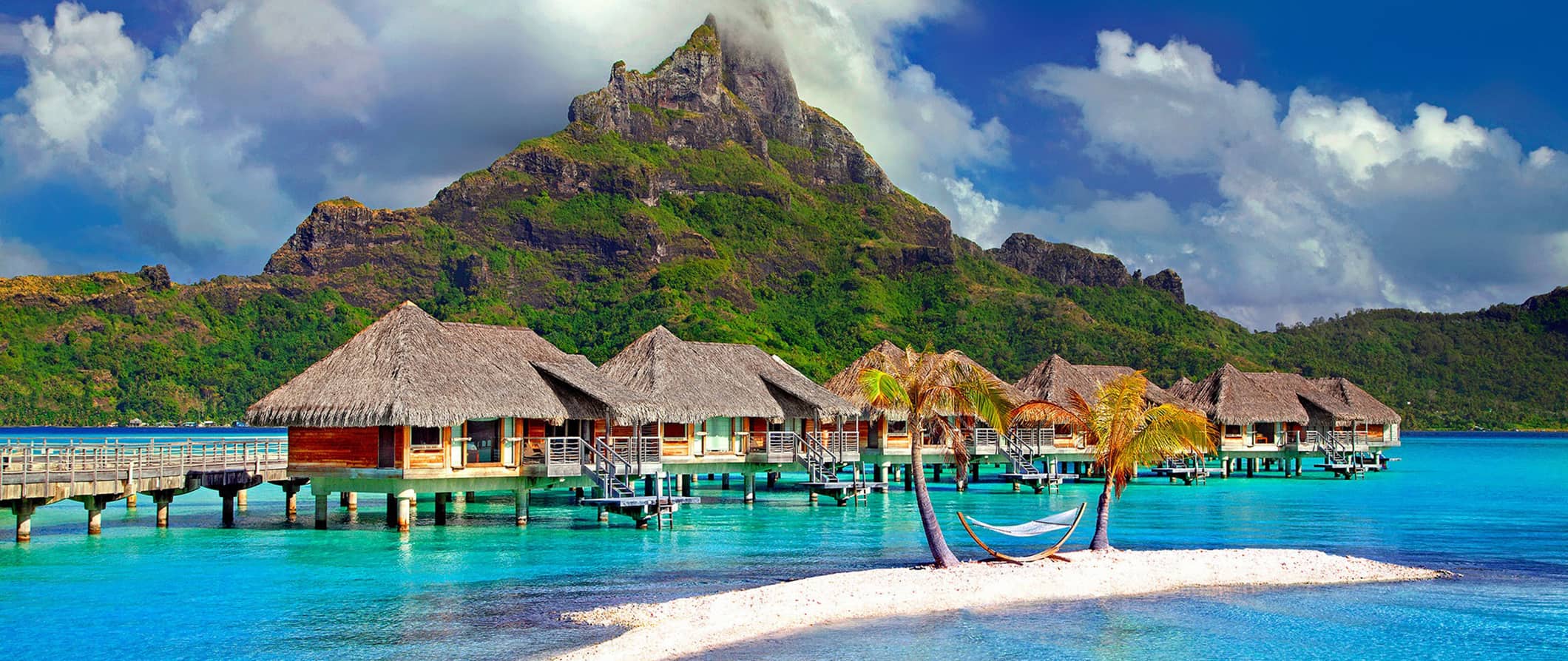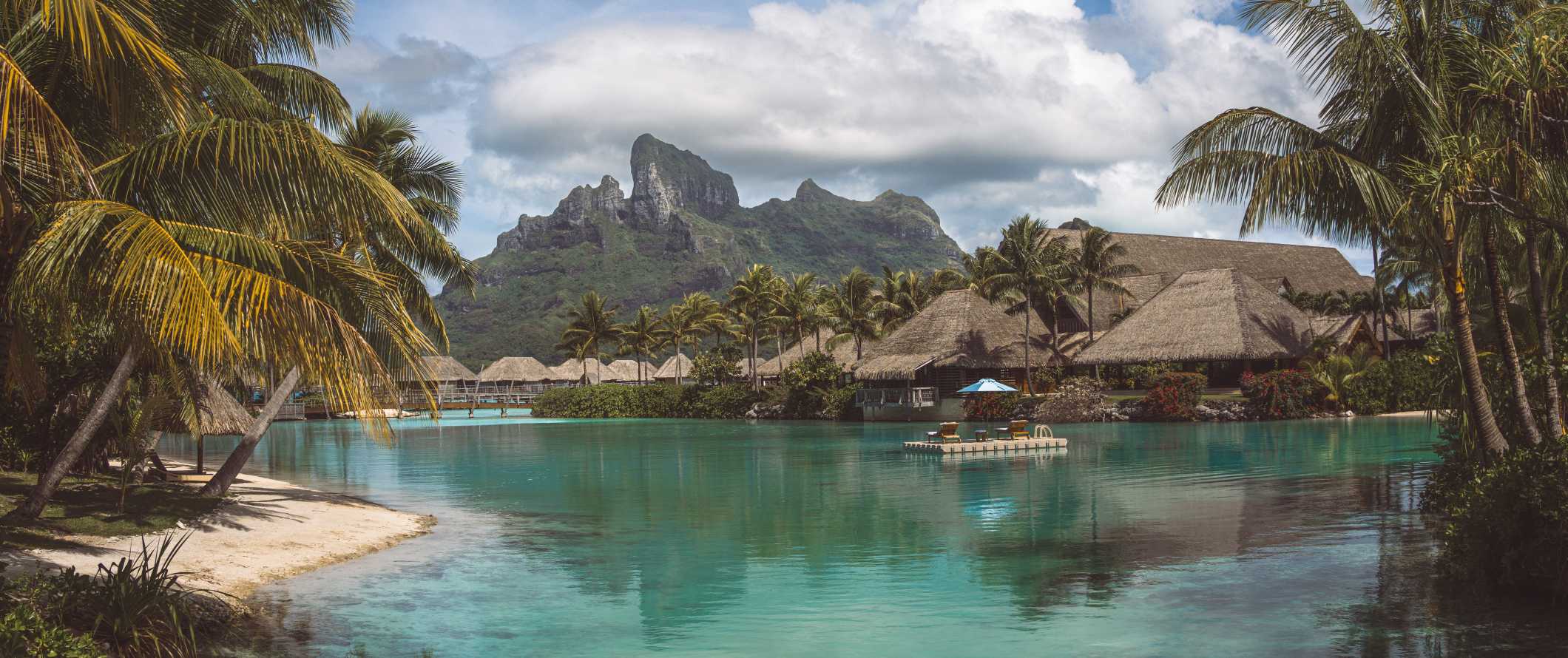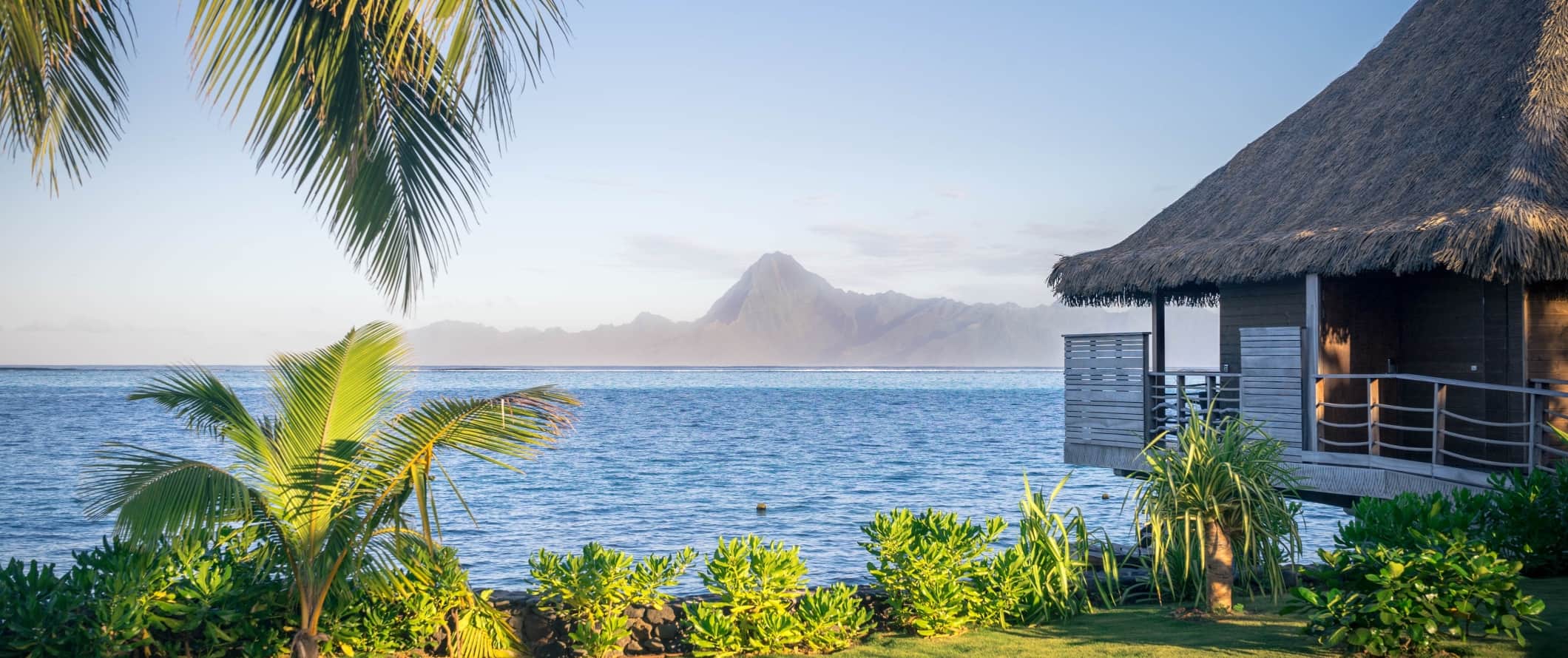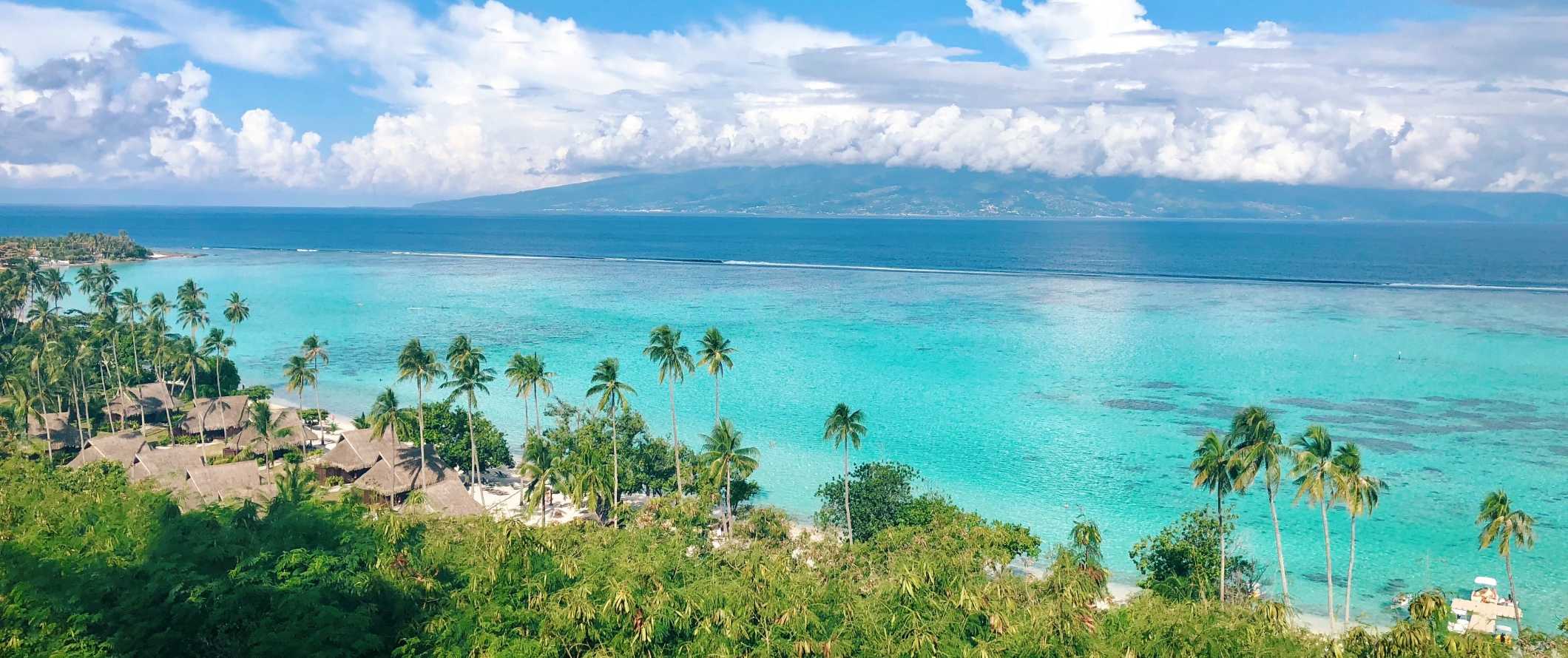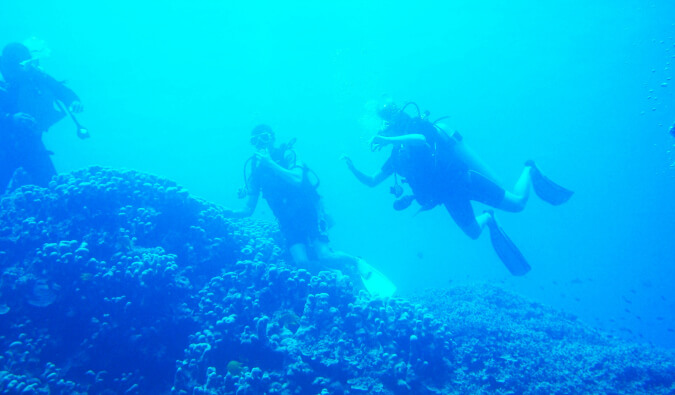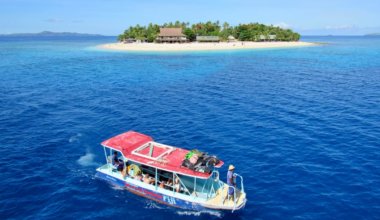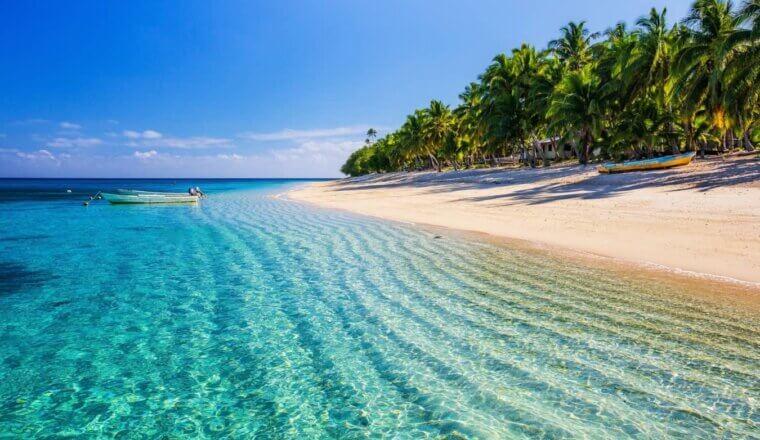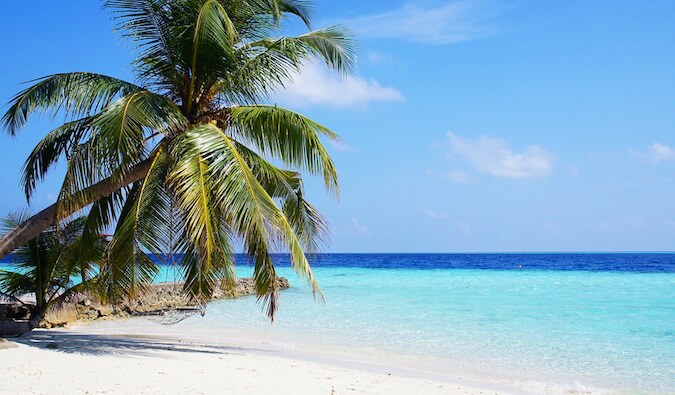French Polynesia is one of the Pacific’s most popular — and sought-after — tourist destinations. It’s composed of 118 islands spread over 6,400 square kilometers of ocean. It’s a massive, remote region offering soaring volcanic peaks, rugged cliffs, and emerald lagoons, providing some of the South Pacific’s most spectacular scenery.
The region was first discovered by Europeans in the 16th century, though it had been inhabited by indigenous Polynesians for over a millennium by that point. Portuguese explorer Ferdinand Magellan was the first to “discover” this paradise, though the Spanish, British, and French also made landfall here over the centuries. France annexed the islands in the late 19th century and the region has been an overseas territory ever since.
Visiting French Polynesia is a bucket list item for many people around the world. This is understandable — it’s nothing short of a tropical paradise, complete with picturesque bungalows on stilts over blue lagoons and postcard-perfect beaches that stretch for miles.
Due to their remoteness and appeal to celebrities and honeymooners, the islands are expensive to visit. I won’t lie: it’s hard to travel here on a budget. But that doesn’t mean it’s impossible; there are still a few ways to cut your costs so you can visit without going broke.
This travel guide to French Polynesia will show you how to save money and make the most of your visit to this sought-after paradise!
Table of Contents
Top 5 Things to See and Do in French Polynesia
1. Go diving
There’s tons of marine life in the waters here, so if you’re a diver, don’t miss out on diving in the area. 11 of the region’s islands have dive centers and single-tank dives cost around 10,100 XPF while two-tank dives are 15,000 XPF. Expect to see dolphins, sharks, barracudas, and even manta rays.
2. Tour Tahiti
Tahiti is the largest of the French Polynesian islands. Try to visit the Museum of Tahiti and the Islands to get an insight into Polynesia culture. Le Marché Papeete (the public market) is the place to try local cuisine and pick up souvenirs.
3. Relax in Bora Bora
Bora Bora is the ultimate island paradise — and the ultimate place to blow your budget. Its famous blue lagoon is the ideal place for jet skiing, paragliding, and other water sports. The jungles offer great hiking too.
4. Go snorkeling
The snorkeling here is incredible. I suggest bringing your own gear if you’re on a budget as rentals add up. Rurutu and Huahine are considered two of the world’s top spots for snorkeling, but you can really do it anywhere!
5. Go surfing
You can surf here all year round and there are swells for all experience levels. Maraa, Teahupoo, Rangiroa Atoll, and Tikehau Left are some of the more popular spots to surf. You can rent boards for around 4,500 XPF per day. Expect to pay around the same for a 2-3 hour surf lesson.
Other Things to See and Do in French Polynesia
1. Visit Fatu Hiva
Fatu Hiva is the southernmost and most isolated of the Marquesas Islands. Its Bay of Virgins is often described as the most stunning bay in French Polynesia. Here you are met with the rugged beauty of the cliff edges, ravines, and jungles. People come here for snorkeling and diving. You can get here via an expensive 3.5-hour flight from Tahiti to Atuona, followed by a 5-hour ferry which costs around 12,000 XPF. For a 12-14-day multi-island cruise around the region, prices start at 360,000 XPF for a room in a 4-bed dorm. It’s pricey to get here but it’s an untouched paradise.
2. Hike to Belvedere Lookout
Situated on Moorea, Belvedere Lookout offers sweeping panoramic views of the island. Several marae (traditional religious places) are scattered in the area leading up to the lookout. It’s around 3 hours roundtrip from Paopao, on an easy trail (you can also drive most of the way up too).
3. Visit a marae
Marae are sacred sites where people came to offer up gifts to the gods. They are usually large cobblestone squares and have no walls or roofs. The most impressive is Taputapuatea, a UNESCO World Heritage Site, on the island of Raiatea. Opunohu Valley, which stretches from the head of Cook’s Bay up towards Belvedere on Moorea Island, also has marae dotted all over the walking trail.
4. Go whale watching
June and July is peak whale-watching season in the Austral Islands south of Tahiti. Pods of humpback whales swim to Rurutu and Tubuai from Antarctica to give birth. This makes for one of the most spectacular sights you are likely to see on your travels. Expect to spend around 10,000-12,000 XPF on a tour. You can also swim with humpback whales, with excursions costing about the same as a whale watching tour.
5. Explore the Harrison Smith Botanical Gardens
These tropical gardens in Papeari on the west coast of Tahiti span over 135 hectares with a loop walking path. Established by amateur botanist Harrison Smith in the 1920s, the gardens are home to numerous species of trees, shrubs, plants, flowers, and lily ponds. They’re free to enter.
6. Head to Ua Pou
This is the third largest of the Marquesa Islands, spanning just over 105 square kilometers (40 square miles) and home to over 2,200 people. It’s one of the only islands in the region that was unified under a monarch before the Europeans arrived. Ua Pou is a dry desert island with oasis-like valleys. Don’t miss the historic Catholic church in the center of the island and its amazing woodcarvings. There are a few limited and rustic accommodation options here (most inhabitants live off of subsistence farming) so if you’re looking for something away from the typical resort island, this is it!
7. Learn about Polynesian History
Accessible from Puamau on Hiva Oa, Lipona is one of the best archaeological sites in French Polynesia. It’s known for its five impressive tiki (large stone figures), the tallest of which is about 10 feet high. The statues are several hundred years old and depict human activities such as giving birth and working. The tallest tiki is of a famous chief. Entrance to the site is 400 XPF.
8. Relax on Mataiva
Located over 300 kilometers (186 miles) from Tahiti, there is little in the way of tourist attractions on this island. However, there are easily accessible beaches, multiple snorkeling spots, and lots of beautiful fish. It’s a postcard-perfect atoll worth spending the time to explore if you want to get away from the more popular islands. Mataiva is just 10-kilometers (6.1 miles) long and home to less than 300 people. Flights to the island are available from nearby Papeete and Rangiroa.
9. Hike around Moorea
Moorea is just 16 kilometers (10 miles) across and crisscrossed with hiking trails where you can pass coconut groves, coffee plantations, and hidden waterfalls. Some suggested trails are Three Coconut Trees Pass (moderate, 2 hours), Mouapata (hard, 2 hours), and Les Trois Sapins (easy, 1 hour).
10. See the tomb of King Pomare V
This tomb, built from coral stone, is the resting place of Tahiti’s last king (who reigned from 1839–1891). He surrendered the islands to French rule and sadly died of alcoholism a decade later. A nearby cemetery contains the graves of his predecessors (Pomare I, II, III, and IV) as well as that of his mother, for whom his tomb was originally built.
French Polynesia Travel Costs
Accommodation – A bed in a 4-5-bed dorm costs around 2,100-3,500 XPF per night. Some dorms have upwards of 15 beds for the same price, so double-check if you don’t want to be stuck in a huge dorm. Free Wi-Fi and self-catering facilities are standard. Many guesthouses with dorms also have outside barbeque areas as well.
A budget hotel room costs around 4,400-9,000 XPF per night. Expect basic amenities like free Wi-Fi, TV, and coffee/tea maker. Budget villas cost around 10,300-13,500 XPF.
Airbnb is available around the region with private rooms starting at 5,100 XPF per night. Entire homes/apartments start at around 8,700 XPF.
Wild camping is prohibited here, however, for those traveling with a tent, there are a few campgrounds around the region costing 2,000 XPF per night for a basic plot without electricity.
Keep in mind that only certain islands have budget-friendly accommodation. Bora Bora has fewer budget options than Moorea or Tahiti, so you need to book in advance to secure the most budget-friendly accommodations there. Once you get into the remote Marquesas, budget accommodation is virtually nonexistent (it’s all villas and pricey resorts).
Food – French Polynesian cuisine relies heavily on staples like fish, bananas, breadfruit (similar to jackfruit), and pork. Naturally, there’s a heavy French influence, including delicious fresh baguettes. Food trucks (known as roulottes) are a cheap way to fill up on tasty snacks and meals. Poisson cru (marinated fish), poe (fruit pudding), clam, and suckling pig are all common traditional offerings.
Expect to pay around 1,800-2,100 XPF for a meal at a casual restaurant, while a pizza costs around 1,400 XPF. A sandwich costs around 500-700 XPF. Fast food (think McDonald’s) costs around 1,300 XPF for a combo meal.
If you want to splash out, a three-course meal of traditional cuisine starts at 2,500-3,500 XPF, including a drink.
Lattes/cappuccinos cost around 350 XPF, beer is around 550 XPF, and bottled water costs 100 XPF.
If you plan on cooking your own food, a week’s worth of groceries costs 6,100-7,300 XPF for staples like rice, fish, seasonal produce, and some meat.
Activities – Single-tank dives cost around 10,100 XPF while two-tank dives are 15,000 XPF. You can rent surfboards for around 4,500 XPF per day, while surf lessons cost around 4,500 XPF for a 2-3-hour lesson. Museum entrances cost around 500 XPF. For budget activities, stick to hiking (which is free) and lounging on the beaches.
Backpacking French Polynesia Suggested Budgets
On a backpacker budget, prepare to spend around 7,900 XPF per day. On this budget, you’ll be staying in a dorm room, cooking all of your meals, doing cheap activities like hiking and snorkeling, limiting your drinking, and sticking to just one island/archipelago.
On a mid-range budget of 16,400 XPF per day, you can stay in a private Airbnb room, eat out for most of your meals, drink a little, go diving, and rent a scooter to get around. You can visit a second island too.
On a “luxury” budget of around 66,200 XPF per day or more, you can stay at a budget hotel, eat out for all your meals, fly to other islands, take guided excursions, rent a car, and indulge in spa visits. This is just the ground floor for luxury though — the sky is the limit!
French Polynesia Travel Guide: Money-Saving Tips
French Polynesia is an expensive destination. You must pick and choose your battles or you’ll blow through your budget within the first couple of days. Here are a few ways you can save money while you’re here:
- Look for package deals – You can often find package deals on sale that include hotels, food, and activities. Don’t hesitate to book a package deal if it’s cheaper.
- Limit your inter-island travel – Traveling between islands is expensive. Stick to just one or two if you’re on a budget.
- Get an Air Tahiti Multi-Island Pass – If you want to visit multiple islands, getting an Air Tahiti Multi-Island Pass is the best bang for your buck. These passes allow you to visit multiple islands for one price. You must book all your tickets in advance before you start using the pass. Prices vary depending on which islands you want to visit and whether it’s high season or not. It’s an incredible value, with prices starting at 38,000 XPF for a Discovery Pass, which offers travel to three of the main islands. The more remote the islands, the more expensive the pass.
- Skip the over-water bungalow – Unless it’s a bucket list dream and you want to splurge, skip booking those fancy over-water bungalows. Sure, they’re cool, but they are super expensive!
- Make sure breakfast is included – Book a hotel or guesthouse that includes breakfast. You save a few bucks each day, which adds up!
- Bring a reusable water bottle – The tap water here is safe to drink so bring a reusable water bottle. LifeStraw makes reusable bottles that have built-in filters that ensure you water is clean and safe.
- Use hotel points – Since French Polynesia isn’t a budget-friendly destination, cash in your points and miles for earn free accommodation. That way you can splash out without breaking the bank! For more info, here’s how to get started!
Where to Stay in French Polynesia
Budget travelers have limited options here. Some guesthouses that have dorm rooms though, and most include breakfast and/or have self-catering facilities. Here are a few suggestions to help you save money in French Polynesia:
- Fare Om (Mo’orea)
- Pension Motu Iti (Mo’orea)
- Pension Te Miti (Tahiti)
- Deck Backpackers (Tahiti)
- Manomano Lodge (Tahiti)
How to Get Around French Polynesia
Buses – Buses are available on Tahiti. Fares are 200-600 XPF depending on the distance. There are three main routes that connect the whole island. Buses have set schedules, though they often detour from them to pick up random passengers, so plan accordingly.
There are no buses on Bora Bora, however, private shuttles can take you around for 300-400 XPF.
Ferries – Ferries are available between Tahiti and Moorea (45 minutes, 3,000 XPF) as well as Bora Bora and Maupiti (2 hours, 4,500 XPF). For islands further afield, such as the Marquesas or the Austral Islands, you need to book a multi-day cruise or sailing charter to access them via boat (and pay hundreds or thousands of dollars to do so).
Flying – Flying around French Polynesia is the most convenient way to get around. It’s also prohibitively expensive. The 1-hour flight from Tahiti to Bora Bora costs 24,000 XPF. The 3.5-hour flight from Tahiti to the Marquesas costs as much as 50,000 XPF. Avoid flying if you’re on a budget.
If you do want to fly around the islands, getting the Air Tahiti Multi-Island Pass is the most affordable way to do so. These allow you to fly to multiple islands for one set price, ranging from 38,000-80,000 XPF.
Car rental– Car rentals can be found for 3,550 XPF per day. You do not need an International Driving Permit (IDP) to rent a car, but there’s no reason to rent a car here.
Hitchhiking – Hitchhiking around the islands is easy and safe. Make sure you have plenty of time to get where you need to go. Signs aren’t necessary and speaking a little French goes a long way. Hitchwiki is the best resource for hitchhiking, however, they currently don’t have much information on the islands.
When to Go to French Polynesia
The most popular time to visit French Polynesia is between June and August. The climate is at its driest and the weather sits comfortably around 25-35°C (77-95°F). This is also the busiest time of year so you may need to book in advance.
To beat the crowds, consider visiting in May or September. The weather is still perfect, but there are slightly fewer crowds. You might find prices to be a little lower too.
It’s rainy between November and April, however, there is still plenty of sunshine and humidity. Make sure to stay somewhere with AC to keep the humidity at bay. Expect daily highs around 30°C (86°F). Tropical storms can occur during this time, though, so make sure you have good travel insurance.
How to Stay Safe in French Polynesia
French Polynesia is a safe destination. Violent attacks and petty crime are both rare here. As long as you keep your valuable secure, you shouldn’t have any problems. Keep in mind that visitors are required to carry ID on them at all times.
Solo female travelers should feel safe here too, though take the standard precautions as you would in any destination (never leave your drink unattended at the bar, never walk home alone at night if you’ve been drinking, etc.).
While break-ins are rare, always make sure you lock your accommodation when you go out.
Tropical storms, including cyclones, can occur between November and April. Check the weather regularly before heading out on your own (especially if you’re going into the water).
Scams here are rare but if you’re worried about getting ripped off you can read about common travel scams to avoid here.
Always trust your gut instinct. Make copies of your personal documents, including your passport and ID. Forward your itinerary along to loved ones so they’ll know where you are.
Dengue Fever can be an issue so consider getting the vaccine before you go. While the main islands have decent medical facilities, keep in mind that evacuation or repatriation from here can cost over 1,000,000 XPF. Consider getting additional evacuation coverage just in case (Medjet is great for that).
Make sure you have travel insurance. It will protect you against illness, injury, theft, and cancellations. It’s comprehensive protection in case anything goes wrong. I never go on a trip without it as I’ve had to use it many times in the past. You can use the widget below to find the policy right for you:
French Polynesia Travel Guide: The Best Booking Resources
These are my favorite companies to use when I travel. They consistently have the best deals, offer world-class customer service and great value, and overall, are better than their competitors. They are the companies I use the most and are always the starting point in my search for travel deals.
- Skyscanner – Skyscanner is my favorite flight search engine. They search small websites and budget airlines that larger search sites tend to miss. They are hands down the number one place to start.
- Hostelworld – This is the best hostel accommodation site out there with the largest inventory, best search interface, and widest availability.
- Booking.com – The best all around booking site that constantly provides the cheapest and lowest rates. They have the widest selection of budget accommodation. In all my tests, they’ve always had the cheapest rates out of all the booking websites.
- Get Your Guide – Get Your Guide is a huge online marketplace for tours and excursions. They have tons of tour options available in cities all around the world, including everything from cooking classes, walking tours, street art lessons, and more!
- SafetyWing – Safety Wing offers convenient and affordable plans tailored to digital nomads and long-term travelers. They have cheap monthly plans, great customer service, and an easy-to-use claims process that makes it perfect for those on the road.
- LifeStraw – My go-to company for reusable water bottles with built-in filters so you can ensure your drinking water is always clean and safe.
- Unbound Merino – They make lightweight, durable, easy-to-clean travel clothing.
- Top Travel Credit Cards – Points are the best way to cut down travel expenses. Here’s my favorite point earning credit cards so you can get free travel!
French Polynesia Travel Guide: Related Articles
Want more info? Check out all the articles I’ve written on French Polynesia travel and continue planning your trip:
